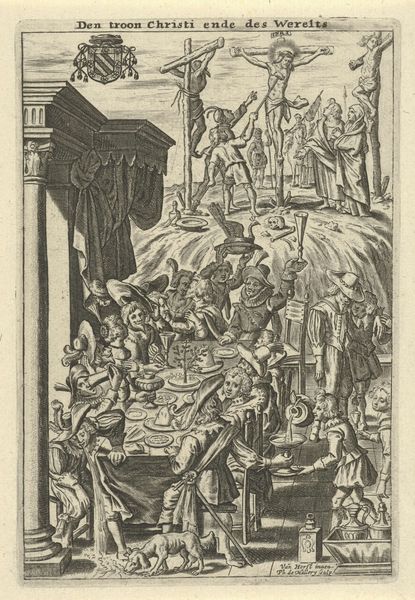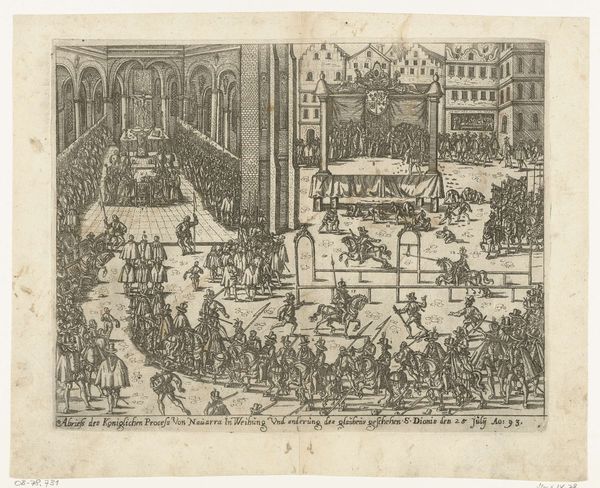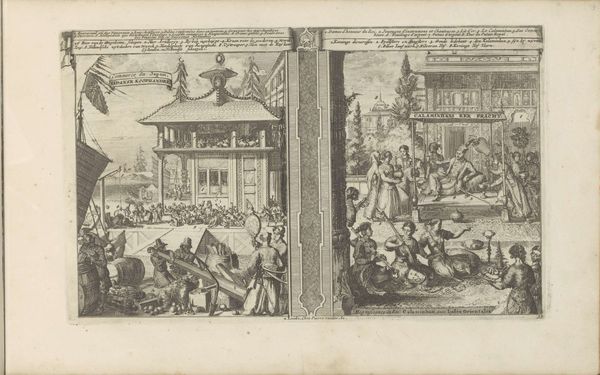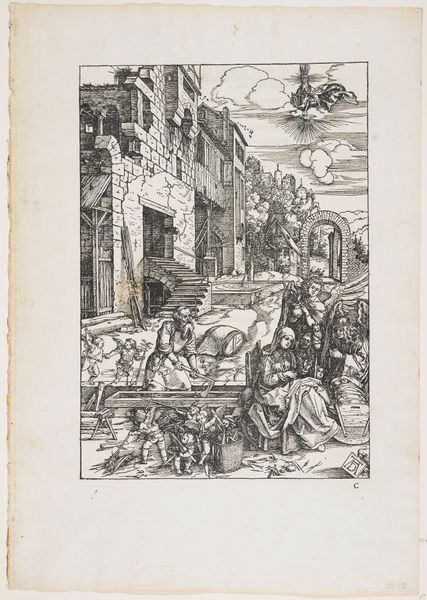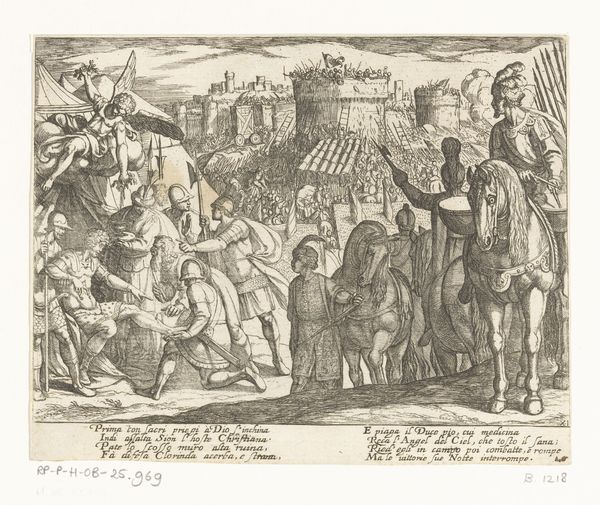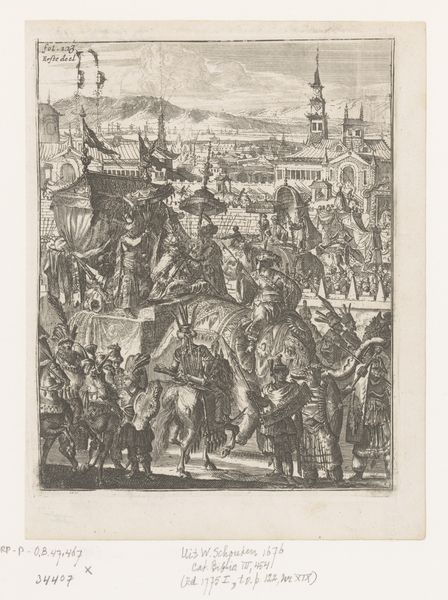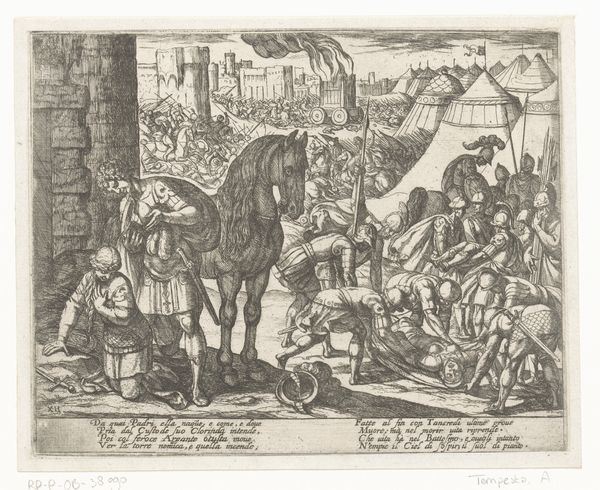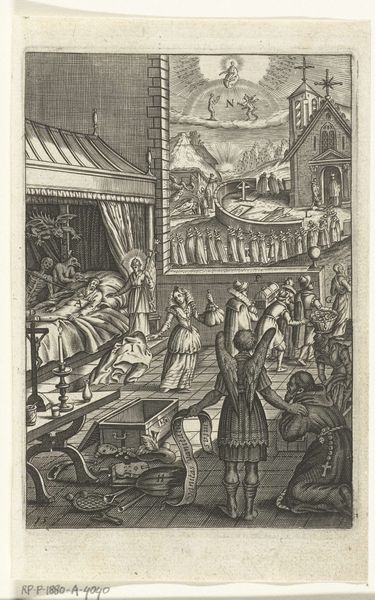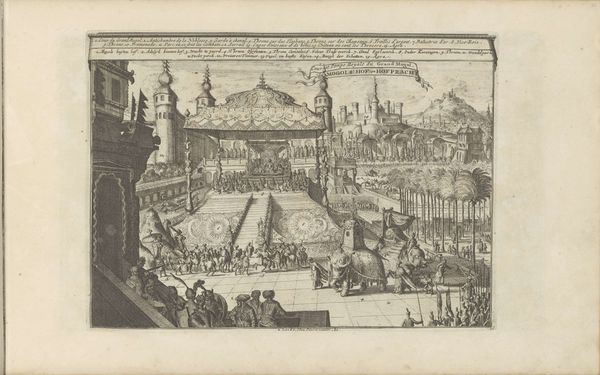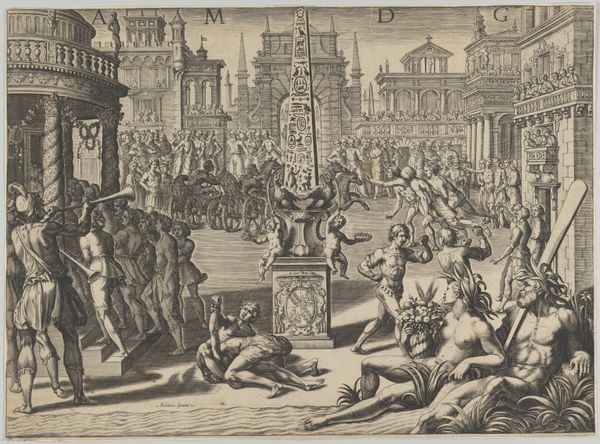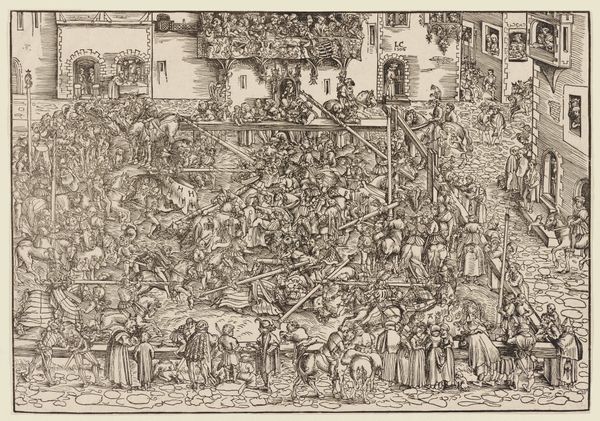
drawing, paper, ink, pen, engraving
#
drawing
#
narrative-art
#
perspective
#
figuration
#
paper
#
ink
#
pen
#
genre-painting
#
history-painting
#
northern-renaissance
#
engraving
Dimensions: height 503 mm, height 248 mm, height 255 mm, width 340 mm
Copyright: Rijks Museum: Open Domain
Curator: Here we have "The Holy Susanna and the Elders," a drawing created around 1540, attributed to an anonymous Northern Renaissance artist. It's rendered in pen and ink on paper, crafted with engraving techniques. Editor: Wow, there’s so much going on in this piece, it’s like a Renaissance “Where’s Waldo” – though instead of Waldo, we're searching for some semblance of peace in Susanna’s life. Visually, it’s a bit jarring at first—so many competing planes and architectural details! Curator: I agree. The architectural backdrop really amplifies the story's context. The scene plays out in what seems like an idealized public bathhouse in an enclosed garden – a symbol of paradise compromised by worldly intrusion. Look at how perspective is manipulated to juxtapose Susanna in the garden with the judgment scene at the top of the picture plane. Editor: That bath... feels almost claustrophobic. Like Susanna’s trapped not only by those leering elders, but by social expectations, by her own purity. Is that bath supposed to be some sort of purification ritual interrupted or maybe a symbol of lost innocence? Curator: Exactly! Water often symbolizes purification, rebirth, and truth. Here, it becomes the site of accusation and entrapment. The elders, ancient symbols of perceived wisdom and authority, now become the villains, attempting to soil Susanna’s reputation. Editor: What about the symbols? Any hints hidden within? The men in elaborate garments... I keep coming back to how visually complex everything is—anxiety-inducing almost, that kind of intensity must be intentional. Curator: Definitely. Consider the way the architecture dominates the landscape. Those archways, the sharp corners... they create a sense of being watched, judged. It reinforces how Susanna is caught, cornered not just by men, but by the gaze of society itself. Every detail, the garden plants and architecture, contributes to this sense of pervasive, invasive observation. Editor: And that’s exactly the power here, isn't it? How this story, visualized centuries ago, echoes through time, reminding us about abuses of power and vulnerability. Curator: Precisely! A potent, albeit visually disquieting reminder. It truly is timeless.
Comments
No comments
Be the first to comment and join the conversation on the ultimate creative platform.
